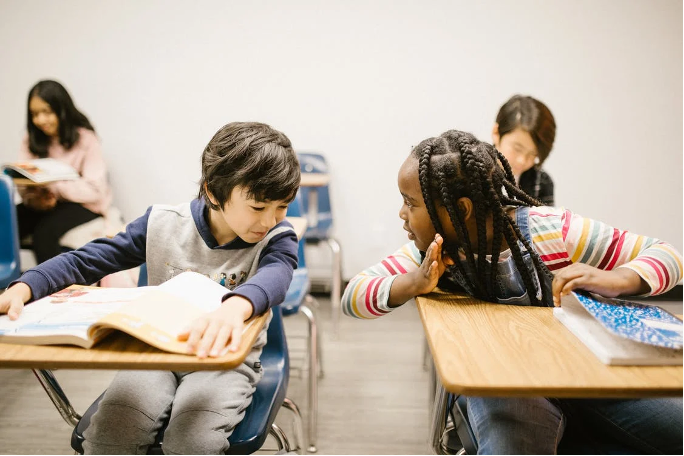What is an Emergent Reader? Plus: 4 Strategies to Support Emergent Readers
Whether you’re a parent or educator, you’ve likely stumbled upon the term “emergent reader” at some point in your student’s reading journey. This phrase is frequently used - but not always clearly defined. Today, we’ll unpack what it really means to be a student in the “emergent stage” of reading, and describe how literacy resources can best support emergent readers.

What is an Emergent Reader?
Emergent readers - sometimes referred to as “beginning readers” - are defined as students who cannot yet read independently but are gradually acquiring the skills of literacy.
For an emergent reader, every step counts. No two readers are alike, but the majority of emergent readers share some key similarities:
- Most emergent readers are in kindergarten or first grade, although this standard has shifted since the pandemic & subsequent introduction of remote learning. Research is beginning to show that distance learning had a negative impact on elementary reading skills.
- They may not write comprehensible sentences, but when asked to write down their address or name, for instance, emergent readers may write a string of scribbles.
- This shows a baseline understanding of writing as a way to share information.
- Emerging readers may point out commonly used words and letters in their everyday worlds, such as words on signs (“Walk!” “Stop!”) or the first letters of their names.
- Emerging readers may be ready to practice high-frequency words or sight words. They’ve learned the alphabet and may pretend to read familiar books.
Reading is not a one-size-fits-all process, and every emergent reader will vary slightly in their abilities and rate of progress. While most emergent readers read below a 4th-grade reading level, they’re making tangible steps toward reading fluently.

Emergent Reader vs. Beginning Reader
Beginning readers and emergent readers are often used interchangeably. That said, the definition of an emergent reader emphasizes the ultimate “emergence” of fluent readers, ideally with the support of a phonics-based reading program. To break it down further, some educators recognize the category of early emergent readers, who range from 6 months to 6 years old and are just beginning their reading journeys. Compared to early emergent readers, you’ll know your student is becoming a fluent reader when they show some of the following signs:
- A strong understanding of phonics
- The ability to read aloud, sometimes with help from an adult
- Decoding skills, which allow readers to unpack more complex sentences
- Progression from picture-heavy books and decodable readers to books with increasingly large chunks of text
- An interest in nonfiction and fiction books that cater to their unique interests - and an eagerness to try reading them on their own!

Resources for Emergent Readers
Regardless of where your student stands in their reading journey, most young readers will benefit from the types of resources designed specifically for readers in the emergent stage. These resources often focus on word recognition, decoding ability, and phonics skills: all of which children need to make the transition to reading fluently. When looking for the best resources for emergent readers, look for curricula and programs that use the following strategies:
1. Direct and explicit instruction, especially for phonics. This may include detailed explanations, modeling independent reading, and guided reading practice.
2. Handwriting instruction: evidence suggests that regular handwriting practice is crucial to support emergent readers and students with reading disabilities.
3. Word blending and segmenting. Emergent readers should be learning how to blend words, which means that they’re able to put individual sounds together to form a word aloud.
a. In addition to word blending, emerging readers will gradually learn how to parse out the individual sounds or phonemes in a word: a process known as word segmentation.
4. For an emerging reader who is struggling to grasp basic literacy skills, spending instructional time on the relationship between sounds and letters - often referred to as “phoneme-grapheme mapping” - is crucial. A solid foundation in phonics is necessary before readers can progress confidently from the emergent stage.
a. Based on recent research on the science of reading, it’s best to introduce students to new letters as quickly as possible: to maximize their exposure, experts recommend teaching at least two new letters per week.
Reading Teacher offers a variety of tools to support emergent readers. With a focus on decodable words and phonics, we’re especially attuned to the foundational needs and varied skills of emergent readers. Above all, emergent readers will benefit most from fun, engaging, and interactive reading activities that foster their desire to read and learn, even before they achieve fluency.
Take-Aways:
- Emergent readers are defined as students who cannot yet read independently, but show an interest in reading, writing, and a basic grasp of the alphabet.
- Emergent readers are commonly referred to as beginning readers.
- The best reading resources for emergent readers will use direct and explicit instruction to teach handwriting, word blending & segmentation, and phoneme-grapheme relationships.
Start Teaching Reading for Free Now!
Access Level 1’s four interactive stories and the accompanying supplemental resources to teach elementary students how to read. No credit card is needed. Join the 42,635 teachers and students using our reading program.
